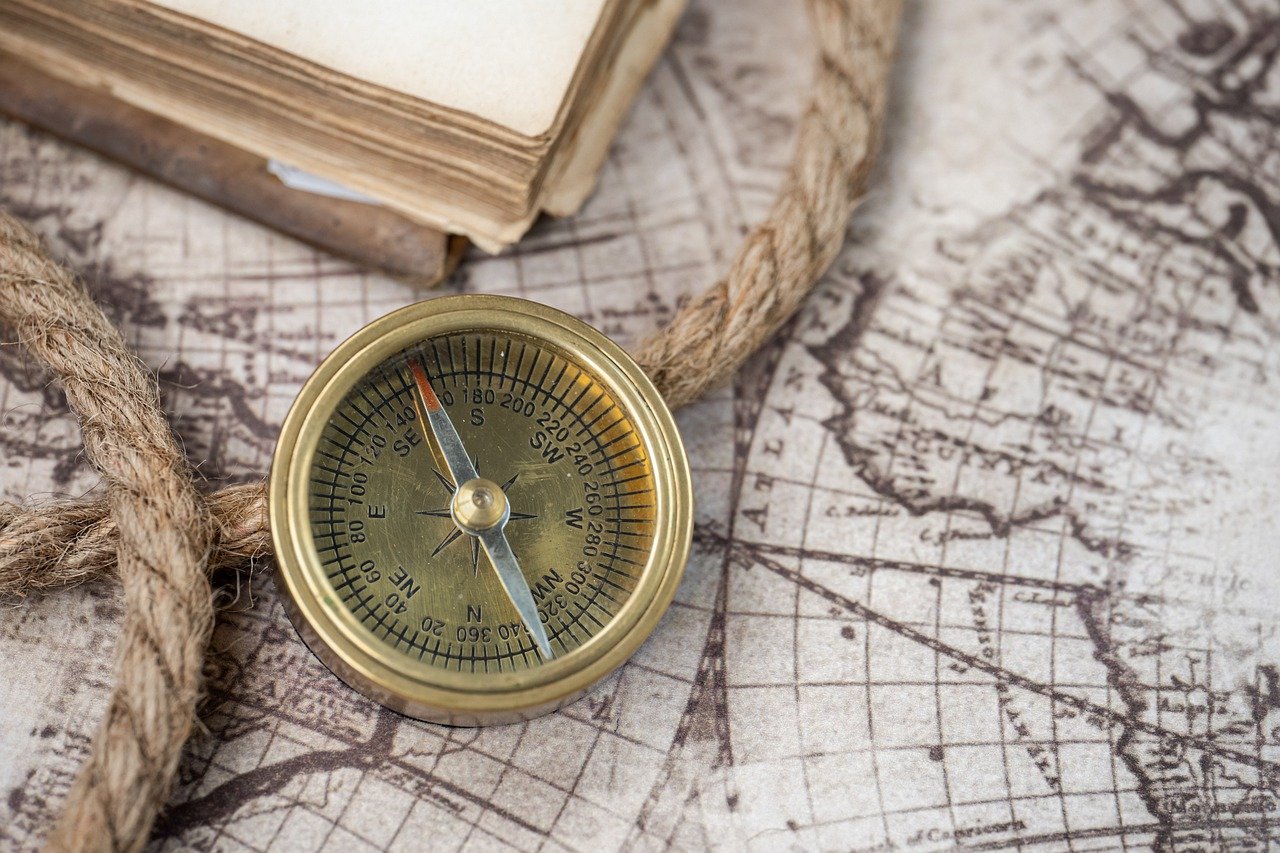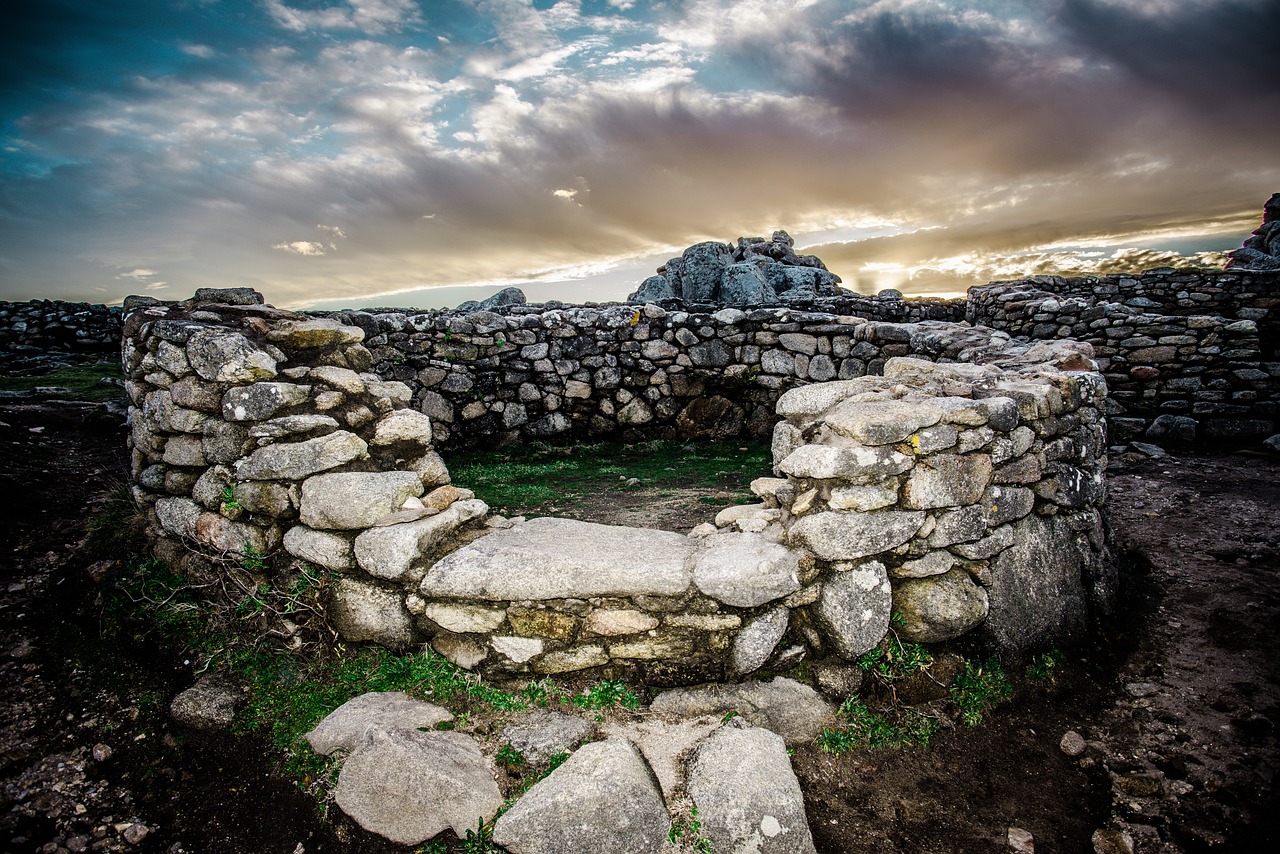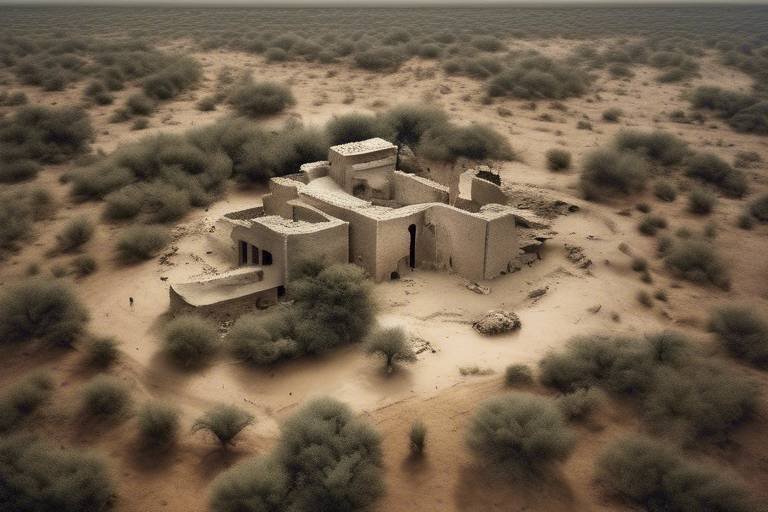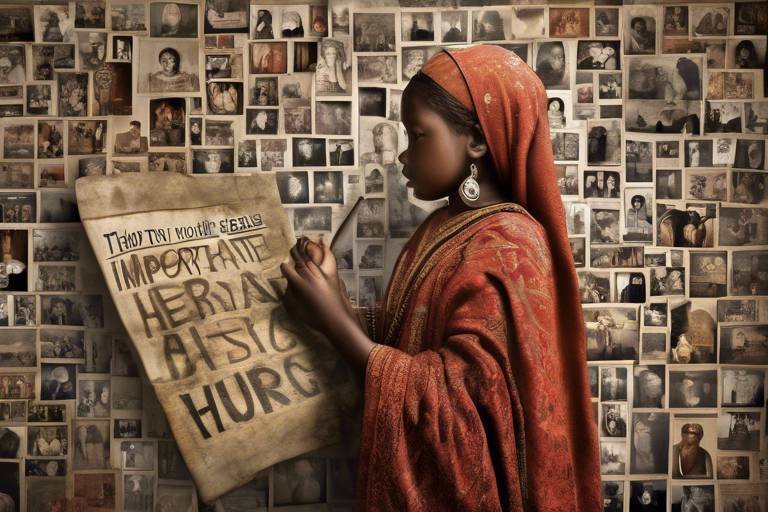How Digital Technology is Changing Heritage Preservation
Digital technology is revolutionizing the field of heritage preservation, bringing about significant advancements in how we protect and showcase our cultural treasures. From 3D scanning and modeling to augmented reality experiences, the impact of digital tools on heritage conservation is profound and far-reaching.
One of the most groundbreaking developments in this field is the use of 3D scanning and modeling. This technology allows for the accurate digital replication of cultural artifacts and sites, enabling virtual restoration and preservation efforts. By creating detailed digital replicas, we can ensure that these precious heritage assets are safeguarded for future generations.
Augmented reality experiences are also playing a crucial role in enhancing visitor engagement with heritage sites. By overlaying digital information onto real-world locations, visitors can enjoy interactive and immersive experiences that bring history to life in a whole new way. This innovative approach not only educates but also captivates audiences, making heritage sites more accessible and appealing.
Virtual museums are another exciting application of digital technology in heritage preservation. Through online platforms, people from around the world can explore museums and artifacts remotely, breaking down geographical barriers and expanding access to cultural heritage. This digital format allows for a rich and interactive exploration of our shared history, fostering a deeper appreciation for our cultural legacy.
Digital archiving is transforming the way historical documents and records are preserved. By digitizing these materials, we ensure easier access, searchability, and long-term conservation. This digital preservation not only protects valuable historical resources but also makes them more readily available for research and education.
GIS mapping has become an invaluable tool in the conservation and management of heritage sites. By utilizing Geographic Information Systems, experts can map and analyze these locations, aiding in conservation planning and monitoring. This data-driven approach helps us make informed decisions to protect and preserve our cultural heritage effectively.
Mobile apps designed for heritage exploration are empowering users to discover and learn about heritage sites on-the-go. These apps provide educational content, interactive features, and guided tours, making heritage experiences more engaging and accessible. By leveraging the convenience of mobile technology, we can inspire a new generation to appreciate and protect our cultural heritage.
Artificial intelligence is also making its mark in heritage preservation, particularly in the restoration of damaged artifacts. AI algorithms can automate and enhance the restoration process, ensuring accurate and efficient preservation efforts. By harnessing the power of AI, we can revitalize and conserve our cultural treasures with unprecedented precision.
Crowdsourcing has emerged as a powerful tool for engaging the public in heritage preservation efforts. By involving communities in conservation projects through crowdsourced initiatives, we can tap into collective knowledge and resources to safeguard our cultural heritage. This collaborative approach fosters a sense of ownership and responsibility among the public, ensuring the continued protection of our shared legacy.
Blockchain technology is being utilized to secure the provenance and authenticity of cultural artifacts, combating illicit trade and ensuring heritage protection. By creating a transparent and tamper-proof record of ownership, blockchain technology helps to preserve the integrity of our cultural heritage and prevent unauthorized exploitation.

3D Scanning and Modeling
Technology has brought about a revolution in the field of heritage preservation, offering innovative solutions that are changing the way we protect and showcase our cultural treasures. From 3D scanning and modeling to augmented reality experiences, digital archiving, and artificial intelligence in restoration, the impact of digital technology on heritage conservation is profound and far-reaching.
3D scanning and modeling have emerged as powerful tools in heritage preservation, allowing for the accurate digital replication and virtual restoration of cultural artifacts and sites. By capturing detailed 3D data, these technologies enable us to create digital replicas that can be studied, preserved, and shared with future generations. Imagine being able to explore ancient ruins or delicate artifacts in stunning detail without risking damage to the originals.

Augmented Reality Experiences
Technology has revolutionized the way we preserve and experience cultural heritage, bringing a wave of innovation to the field of heritage conservation. From 3D scanning and modeling to augmented reality experiences, digital advancements are shaping the future of heritage preservation. Let's explore how these technologies are transforming the way we interact with our past and safeguard it for future generations.
Augmented reality (AR) is reshaping the way visitors engage with heritage sites by blending the physical world with digital overlays. Imagine walking through ancient ruins and seeing virtual reconstructions of what they once looked like, or standing in front of a historical building and watching as historical events unfold before your eyes. AR experiences bring history to life, offering interactive and immersive encounters that captivate audiences of all ages.

Virtual Museums
Virtual museums are revolutionizing the way people interact with cultural heritage. Through online platforms, individuals from all corners of the globe can now explore museums and artifacts remotely. This digital transformation has broken down geographical barriers, allowing anyone with an internet connection to delve into the rich history and significance of various heritage sites.
Imagine being able to stroll through the halls of renowned museums, admiring ancient artifacts and masterpieces, all from the comfort of your own home. Virtual museums offer a unique opportunity for individuals who may not have the means to travel to physically visit these cultural treasures. It's like having a personal tour guide at your fingertips, guiding you through centuries of history and art.
Moreover, virtual museums provide a dynamic and interactive experience for users. With just a click of a button, visitors can zoom in on intricate details of artifacts, access additional information about each piece, and even participate in virtual tours led by experts in the field. This level of engagement goes beyond what traditional museums can offer, making the exploration of cultural heritage more immersive and educational.
Additionally, virtual museums contribute to the preservation of cultural artifacts by reducing physical wear and tear. With digital replicas available online, the need for constant handling and exposure of delicate items is minimized, ensuring their longevity for future generations to appreciate. This digital archive serves as a safeguard against loss or damage, preserving our heritage in a sustainable and accessible manner.
In conclusion, virtual museums represent a significant advancement in heritage preservation, democratizing access to cultural treasures and fostering a deeper appreciation for our shared history. By leveraging digital technology, these online platforms bridge the gap between past and present, allowing us to explore the wonders of the world from anywhere, at any time.

Digital Archiving
Digital archiving is a crucial component of heritage preservation in the digital age. By converting historical documents, photos, and records into digital formats, we are ensuring their longevity and accessibility for future generations. Imagine being able to browse through centuries-old manuscripts or view rare photographs with just a few clicks. This transformation not only facilitates easier access but also enables efficient searchability, making it easier for researchers, historians, and enthusiasts to explore our rich cultural heritage.

GIS Mapping
GIS mapping, or Geographic Information Systems mapping, is a powerful tool transforming the landscape of heritage preservation. By harnessing the capabilities of GIS technology, experts can create detailed maps that provide valuable insights into heritage sites and their surrounding environments. These maps not only offer a visual representation of the sites but also enable in-depth analysis and planning for conservation efforts.
Imagine being able to overlay layers of information onto a digital map, allowing researchers to pinpoint areas of historical significance, track changes over time, and identify potential threats to heritage sites. GIS mapping goes beyond traditional paper maps, offering a dynamic and interactive way to explore and protect our cultural heritage.
Through GIS mapping, heritage conservationists can gather data on the topography, vegetation, and infrastructure surrounding a site, aiding in decision-making processes related to preservation and development. By analyzing this spatial data, experts can better understand the context in which heritage sites exist and implement strategies to ensure their long-term sustainability.

Mobile Apps for Heritage Exploration
Mobile apps have revolutionized the way we explore and learn about heritage sites, bringing history to our fingertips wherever we go. These apps serve as virtual tour guides, offering detailed information, interactive maps, and engaging multimedia content to enhance the visitor experience.
Imagine walking through the ancient ruins of a civilization, and with a simple tap on your smartphone, you can uncover the secrets of the past through augmented reality features. These apps not only provide historical context but also allow users to visualize how these sites looked centuries ago, creating a bridge between the past and the present.
Moreover, mobile apps for heritage exploration cater to a wide range of audiences, from casual tourists to avid history enthusiasts. They offer customizable experiences, allowing users to delve deeper into specific aspects of a site or artifact based on their interests. Whether you are interested in architecture, archaeology, or folklore, there is an app tailored to satisfy your curiosity.
Additionally, these apps often include interactive features such as quizzes, scavenger hunts, and augmented reality games, making the learning process fun and engaging for users of all ages. By gamifying the exploration of heritage sites, these apps appeal to a younger generation and instill a sense of appreciation for cultural preservation.
Furthermore, mobile apps for heritage exploration play a crucial role in promoting sustainable tourism practices. By providing virtual access to historical sites, these apps help reduce physical foot traffic, minimizing the impact of mass tourism on fragile heritage locations. Users can explore these sites from the comfort of their homes, fostering a sense of global connectedness and responsibility towards preserving our shared cultural heritage.
In conclusion, mobile apps for heritage exploration have transformed the way we interact with and appreciate our cultural legacy. By leveraging digital technology, these apps bridge the gap between the past and the present, making history more accessible, engaging, and relevant to modern audiences.

Artificial Intelligence in Restoration
Artificial Intelligence (AI) is revolutionizing the restoration process of cultural artifacts, bringing a new level of accuracy and efficiency to preservation efforts. By harnessing the power of AI algorithms, damaged artworks and historical objects can undergo automated restoration, ensuring that they are faithfully preserved for future generations. This cutting-edge technology analyzes intricate details, identifies areas of damage, and generates precise restoration solutions, all in a fraction of the time it would take a human expert.
Imagine a masterpiece that has weathered the ravages of time, its colors faded and its structure weakened. Through the application of AI in restoration, this artwork can be digitally scanned and analyzed to create a comprehensive restoration plan. AI algorithms can fill in missing details, repair cracks, and enhance colors, all while maintaining the integrity and authenticity of the original piece. The result is a seamless blend of tradition and innovation, where the past is brought back to life with unparalleled precision.
Furthermore, AI in restoration is not limited to physical objects but extends to digital preservation as well. Historical documents, photographs, and manuscripts can be digitally enhanced and restored using AI technology, ensuring that fragile records are safeguarded for the future. This digital restoration process allows for easier access to valuable historical information, enabling researchers and historians to delve into the past with clarity and accuracy.
One of the key advantages of AI in restoration is its scalability and consistency. Unlike traditional restoration methods that rely on individual expertise and manual labor, AI algorithms can be applied uniformly across multiple artifacts, ensuring a standardized level of restoration quality. This scalability is particularly valuable in large-scale preservation projects where numerous artifacts require attention, allowing for efficient and cost-effective restoration processes.
In conclusion, Artificial Intelligence is reshaping the landscape of heritage preservation by offering advanced restoration solutions that combine technological innovation with cultural heritage conservation. As AI continues to evolve, its role in restoring and safeguarding our shared heritage will only become more prominent, ensuring that the treasures of the past remain vibrant and accessible for generations to come.

Crowdsourcing Cultural Heritage
Crowdsourcing cultural heritage is a modern approach that involves engaging the public in preservation efforts, leveraging the collective knowledge and resources of a diverse community. By tapping into the power of crowds, heritage organizations can benefit from the expertise and passion of individuals worldwide, making heritage conservation a collaborative and inclusive process.
One of the key advantages of crowdsourcing cultural heritage is the ability to gather diverse perspectives and insights that may not be accessible through traditional means. By involving enthusiasts, scholars, and local communities in the preservation of cultural artifacts and sites, a rich tapestry of knowledge is woven, enriching the understanding and significance of heritage for future generations.
Through crowdsourcing initiatives, heritage organizations can harness the collective intelligence of volunteers to digitize, transcribe, and annotate historical documents and artifacts. This mass collaboration not only accelerates the process of cataloging and documenting cultural heritage but also fosters a sense of ownership and pride among participants, creating a shared responsibility for safeguarding our collective past.
Moreover, crowdsourcing cultural heritage projects often serve as educational platforms, offering participants the opportunity to learn about history, archaeology, and conservation practices. By actively involving the public in hands-on activities such as artifact digitization or site mapping, these initiatives promote a deeper engagement with heritage, fostering a sense of connection and stewardship towards our shared cultural legacy.

Blockchain for Heritage Authentication
Blockchain technology is revolutionizing the authentication of cultural heritage artifacts by providing a secure and transparent way to verify their provenance and authenticity. By utilizing decentralized and immutable ledgers, blockchain ensures that the history and ownership of heritage items are securely recorded and cannot be altered or falsified.
Imagine a digital fingerprint for each artifact, stored on a shared network where every transaction and change is documented in a tamper-proof manner. This not only helps in combating the illicit trade of cultural treasures but also safeguards them from theft and forgery, ensuring their protection for future generations.
Through blockchain, museums, collectors, and heritage institutions can establish a trustworthy record of ownership and transfer history, enabling them to trace back the origins of valuable artifacts with ease. This technology acts as a digital guardian, preserving the integrity and heritage of cultural objects in an increasingly digital world.
Frequently Asked Questions
- What is 3D scanning and modeling in heritage preservation?
3D scanning and modeling involve creating digital replicas of cultural artifacts and heritage sites using advanced technology. This process allows for accurate preservation, virtual restoration, and documentation of historical objects and locations for future generations.
- How does augmented reality enhance visitor experiences at heritage sites?
Augmented reality overlays digital information onto real-world environments, providing interactive and immersive experiences for visitors at heritage sites. By blending the physical and digital worlds, AR technology offers unique ways to engage with cultural history and artifacts.
- What are virtual museums and how do they expand access to cultural heritage?
Virtual museums are online platforms that allow people from around the world to explore museums and artifacts remotely. By digitizing collections and offering interactive exhibits, virtual museums provide a convenient and educational way to access cultural heritage.
- How does AI contribute to the restoration of damaged artifacts?
Artificial intelligence algorithms are used to automate and improve the restoration process of damaged artifacts. AI technology ensures precise and efficient restoration efforts, helping to preserve the authenticity and historical significance of cultural objects.
- What role does crowdsourcing play in cultural heritage preservation?
Crowdsourcing engages the public in heritage preservation by leveraging collective knowledge and resources for conservation projects. By involving a broader community in preservation efforts, crowdsourcing initiatives contribute to the protection and documentation of cultural heritage.



















